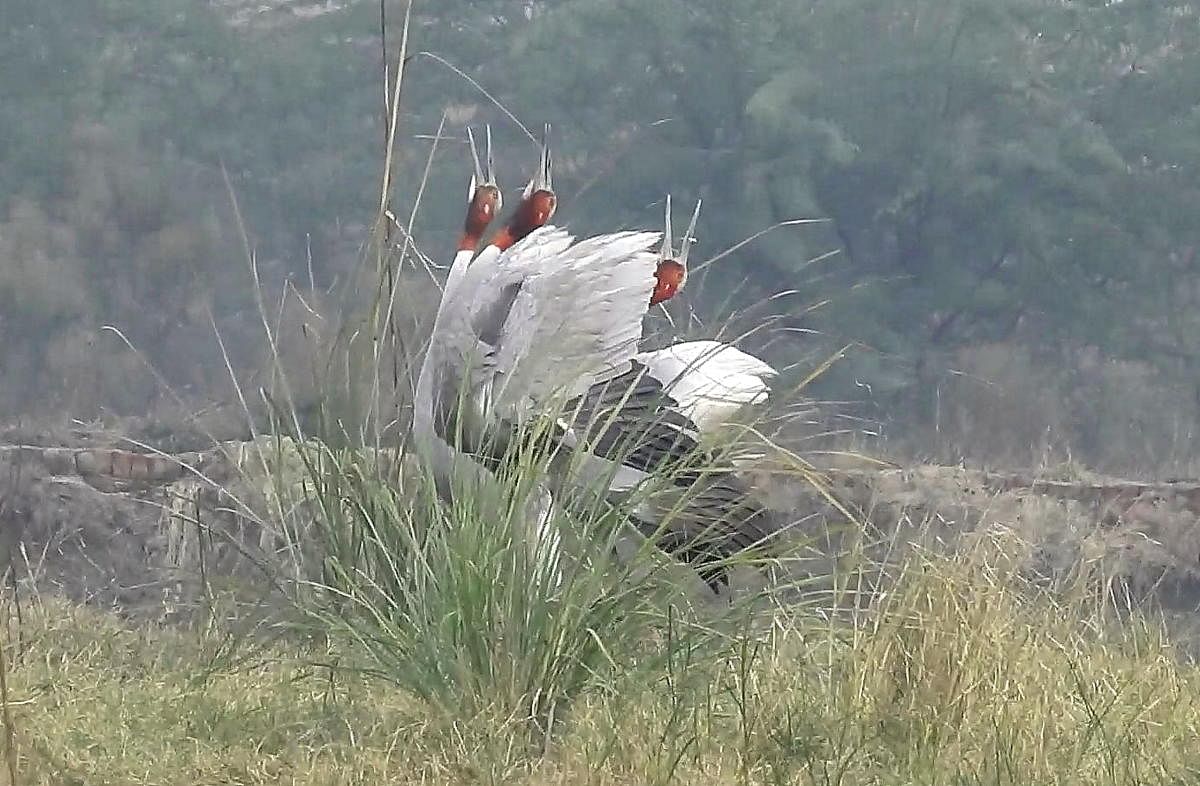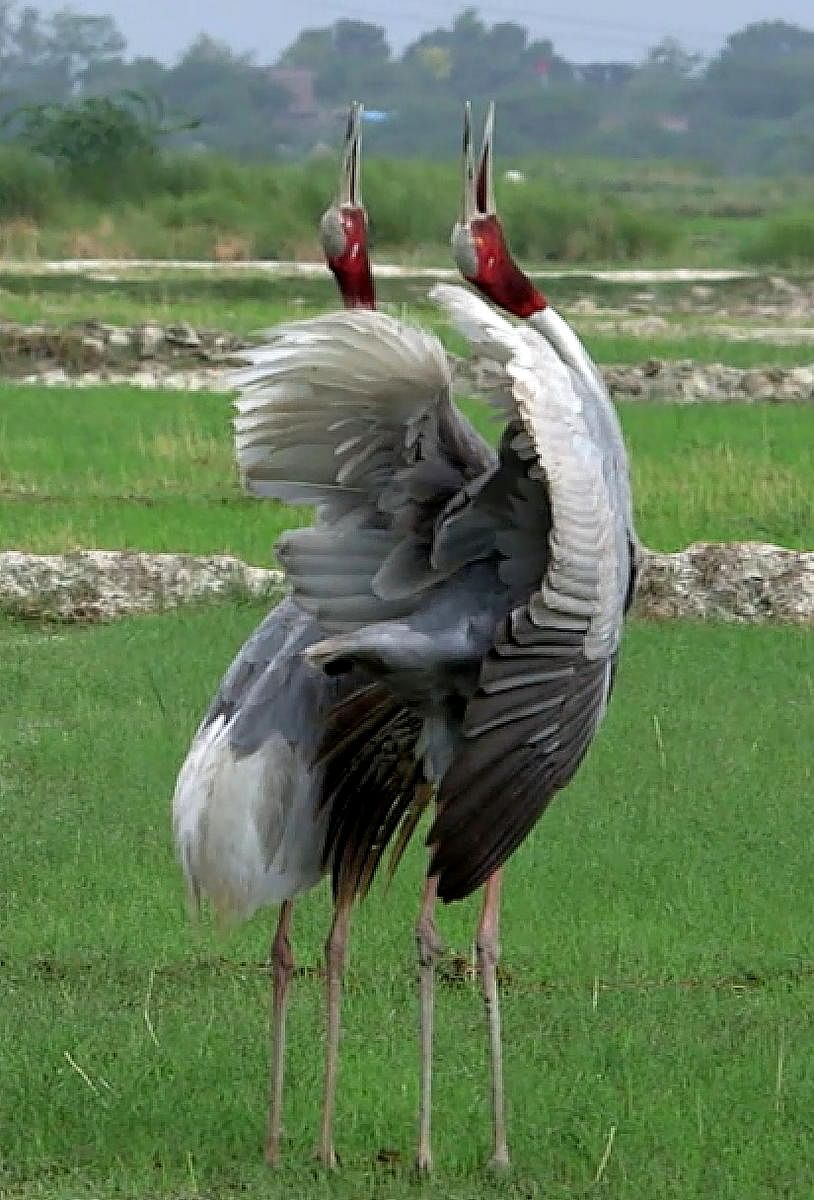

The social behaviour of birds, bees or animals is often full of surprises that unravel as we go on studying them. For instance, tigers are mostly solitary. Male and female tigers hunt on their own. Among lions, the lioness hunts and allows the lion to savour it first. The small green bee-eaters, after their eggs hatch, deploy a younger, non-breeding bird to help feed and be around.
Now, a new study by researchers K S Gopi Sundar and his team at the Nature Conservation Foundation (NCF) published in Ecology Society of America journal has discovered a novel social unit among Sarus cranes.
Sarus cranes are among the most popular resident cranes found in most parts of north India and parts of Southeast Asia and Australia. They are the tallest flying birds mostly found in and around marshes and shallow wetlands.
A Sarus crane has grey wings, a large body, a characteristic red on its head and upper neck, and a pointed bill. Although both sexes are alike in terms of plumage, a male Sarus is slightly larger and can be as tall as 180 cm.
The trios and triets
Monogamy is the prominent social system among birds. However, to increase the survival of the brood and improve their fitness, some species are known to exhibit polyandry (when a female animal has more than one male mate), polygyny (when a male animal has more than one female mate), polygynandry (when both females and males mate with multiple males and females) and cooperative breeding (where both males and females are helpers).
For instance, the acorn woodpeckers are known to be polyandrous, and the mute swans are polygynous, says Gopi Sundar.
The cranes are known to be monogamous with a characteristic long-term pairing and displaying the behaviour of producing synchronised, unison calls, known as duets. The calls are supposed to help them mark their territories and reinforce their pair bonding.
However, in their recent study, Gopi Sundar and his team found a novel social unit — groups of three Sarus cranes named ‘trios’. All the three birds sing or call in unison, which was named by the researchers as ‘triet’.
Interestingly, the chicks raised by trios displayed behaviours identical to that of the pairs. Gopi Sundar adds, “We only know that trios were more successful in raising chicks, suggesting that the third crane was helping with provisioning and perhaps also defending the territory.”
Distress behaviour?
In one of the first observations of the polygynous Sarus crane trios, the researchers found that they produced triets when other Sarus cranes came closer to their territory.
“As they commenced nesting, one of the female cranes disappeared while the remaining pair nested, incubated eggs and provisioned the young chicks. The second female joined them after the chicks fledged and participated in provisioning for chicks. However, when the eggs were lost, or the breeding pair were unsuccessful in nesting, the second female immediately joined back,” explains Gopi Sundar.
The researchers found that, like duets, the triets had a coordinated structure with the female commencing the call. Then other cranes joined in to create a series of repeated notes, followed by synchronised displacement preening where the birds would clean their feathers together.
The researchers used spectrograms to compare the triets and duets. They found that the triets had a lower minimum frequency in relation to the duets. In addition, the triets were acoustically distinct from duets.
Field observations from 1998 to 2020 that documented this unique behaviour among Sarus cranes were used in the study. The researchers also documented the videos and call recordings of duets and triets. In addition, they assessed the seasonality and distribution of trios using data collected as part of a multi-year monitoring programme from 2013 to 2020.
Behaviour linked to territorial quality
In all, the researchers had 11,591 sightings over the years of pairs, flocks, and trios. Of these, only 193 were trios, but the occurrences of trios were widely distributed.
The researchers documented the territorial quality of breeding sites as well. The trios were found mostly in low-quality territories, with less than 20% of wetlands or marshes in the territory, and mostly during summers.
This has raised questions among researchers on the evolutionary significance of the formation of trios in Sarus cranes, which were, until now, known to be monogamous. They may be forming trios to increase the success in breeding and improving the fitness of birdlings, particularly when the territorial quality is poor.
Going by this observation, the climate change we are witnessing, in all likelihood, might have hit the territorial quality of the breeding sites, thus also impacting the breeding behaviour of Sarus cranes. Only future studies and genetic analysis can throw more light on this.
(The author is with Research Matters)